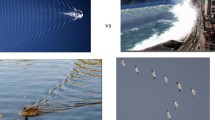Abstract
In modern large-sized tokamaks and those under construction, for example, in ITER, when measuring the average plasma electron density using the refractometry technique, it becomes necessary to study different effects that affect the measurement accuracy. This paper presents the results from studies of the high-temperature effects that can affect the interpretation of delay time measurements of the probing microwave signal in the ITER refractometry diagnostics. The criteria for applicability of different plasma models (“cold” plasma, modified “cold” plasma, and “hot plasma”) are obtained for calculating the plasma refractive index and interpreting the delay times that will be measured using the refractometry diagnostics of the ITER plasma. In the second article, based on the results obtained in this article, we will consider the influence of the high-temperature effects on the accuracy of determining the mean density using the refractometry diagnostics.














Similar content being viewed by others
REFERENCES
A. V. Krasilnikov, Y. A. Kaschuck, V. A. Vershkov, A. A. Petrov, V. G. Petrov, and S. N. Tugarinov, in Proceedings of the International Conference on Fusion Reactor Diagnostics, Varenna, 2013, AIP Conf. Proc. 1612, 133 (2014).
V. L. Ginzburg, The Propagation of Electromagnetic Waves in Plasmas (Nauka, Moscow, 1967; Pergamon, Oxford, 1970).
E. Mazzucato, Phys. Fluids B 4, 3460 (1992). https://doi.org/10.1063/1.860354
I. P. Shkarofsky, J. Plasma Phys. 35, 319 (1986). https://doi.org/10.1017/S0022377800011363
H. Bindslev, Plasma Phys. Control. Fusion 33, 1775 (1991). https://doi.org/10.1088/0741-3335/33/14/005
H. Bindslev, Plasma Phys. Control. Fusion 34, 1601 (1992). https://doi.org/10.1088/0741-3335/34/11/001
A. A. Petrov and V. G. Petrov, Rev. Sci. Instrum. 74, 1465 (2003). https://doi.org/10.1063/1.1530389
V. F. Shevchenko, A. A. Petrov, V. G. Petrov, and Yu. A. Chaplygin, Plasma Phys. Rep. 22, 21 (1996).
R. D. Blandford and K. S. Thorne, Applications of Classical Physics, 2012-2013 Version of Textbook. http://www.pmaweb.caltech.edu/Courses/ph136/yr2012.
V. Krivenski and A. Orefice, J. Plasma Phys. 30, 125 (1983). https://doi.org/10.1017/S0022377800001045
A. J. H. Donné, A. E. Costley, R. Barnsley, H. Bindslev, R. Boivin, G. Conway, R. Fisher, R. Giannella, H. Hartfuss, M. G. von Hellermann, E. Hodgson, L. C. Ingesson, K. Itami, D. Johnson, Y. Kawano, et al., Nucl. Fusion 47, 337 (2007).
Author information
Authors and Affiliations
Corresponding author
Additional information
Translated by I. Grishina
Rights and permissions
About this article
Cite this article
Afonin, K.Y., Petrov, V.G. Influence of High-Temperature Effects on Interpretation of Probing Wave Time Delay in the ITER Refractometery Measurements. Plasma Phys. Rep. 47, 337–344 (2021). https://doi.org/10.1134/S1063780X21040012
Received:
Revised:
Accepted:
Published:
Issue Date:
DOI: https://doi.org/10.1134/S1063780X21040012




